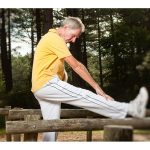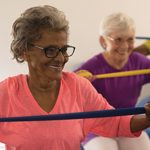
During the COVID-19 pandemic, it’s crucial for homebound older adults to find safe and effective ways to exercise, an expert says. At-home workouts can help strengthen muscles, improve balance, increase blood flow to the heart, boost the immune system and reduce stress, according to Summer Cook, an associate professor of kinesiology and an expert on senior fitness at the University of New Hampshire, in Durham. “People in their 20s and 30s often set health goals like running marathons or losing weight, but as people age there is a point where they shift their priorities to maintaining health, not necessarily for athletics or looks but for improving the ability to do their daily activities,” she said in a university news release. Being inactive can worsen existing health problems, so it’s crucial for older adults to find ways to get extra exercise beyond their typical daily activities. “My goal is to keep older adults as independent as possible as they age,” Cook said. “And while most seniors find themselves not getting out of the house as much these days, it’s important for them to know that there are still plenty of ways to work on their health at home.” The first thing older adults should do is talk to their doctor about any exercise plan to ensure that it is safe and effective. The focus should be… read on > read on >






















-300x200.jpg)










